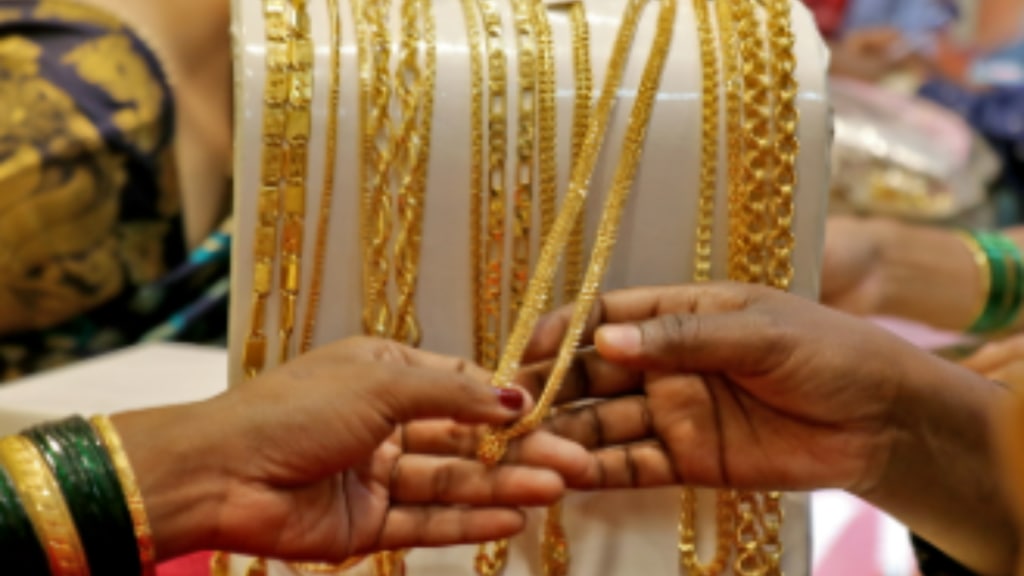India’s gold demand in the March quarter rose 8% from a year ago, but a continuation of recent price rallies could cut its total consumption in 2024, the World Gold Council (WGC) said on Tuesday.
Demand for gold from India could stand around 700-800 tonne in 2024, with the figure falling near the lower end of the range if prices continue to rally.
The WGC had earlier expected demand in India to rise to between 800 tonne and 900 tonne in 2024. India’s gold consumption fell 1.7% in 2023 from a year earlier to 761 tonne.
Sachin Jain, the new India regional CEO of the World Gold Council, said the general election may keep demand subdued. Data show that gold consumption tends to decline ahead of the general election as there is greater scrutiny on the movement of gold and cash. “Any further sharp rises in the gold price could present a short-term headwind by sparking profit-taking and may result in a reduction in volumes purchased due to affordability constraints,” Jain said.
This note of caution is important as the largest gold buying occasion, Akshaya Tritiya, falls in May.
India’s total demand in the first quarter of calendar year 2024 rose to 136.6 tonne, compared with 126.3 tonne in the same period last year.
The growth in jewellery demand was a marginal 4% from 91.9 tonne to 95.5 tonne in the March quarter. However, investment demand increased by 19% to 41.4 tonne. In value terms, it was 32%, indicating a good return, according to WGC’s Gold Demand Trend Q1 2024 report released on Tuesday.
Jain said the price correction in February sparked investor buying with anticipation of a rebound. As the price rallied to successive record highs, investors remained bullish, contributing to the robust demand. Investments into gold ETFs also saw positive inflows of over 2 tonne (taking the total outstanding of gold ETFs to 44.7 tonne). The Reserve Bank of India also increased its gold reserves by 19 tonne during Q1, exceeding last year’s annual net purchases of 16 tonnes (India’s total gold in forex reserves is now 817 tonne).
The sale of sovereign gold bonds (SGBs) in the March quarter was also 12.8 tonne, compared with 3.5 tonne in the previous year’s March quarter. However, SGBs do not represent physical demand for gold, so the WGC does not count them.
Globally, jewellery demand fell 2% and investment demand increased by 3% in the March quarter. The average gold price was $2,070 per ounce, which is 10% higher year-on-year and 5% quarter-on-quarter.
The report examines three key factors that will impact the global price and demand-supply outlook for gold.
In 2024, gold is expected to yield higher returns than initially predicted by the WGC. This will be due to ongoing buying by central banks in emerging markets and retail investment, despite the absence of visible physical Western investment.
In the first quarter, central banks added a total of 289.1 tonne gold to their reserves, a slight increase of 1%. However, prices were on the rise during this period. WGC is cautious about central bank buying, as some may take advantage of the significant price increase this year and become opportunistic sellers.
The recent surge in gold prices is likely to lead to an increase in the recycling supply (selling of old gold) and a decrease in jewellery demand. However, geopolitical risks and the investment role of jewellery in certain countries may limit the impact. In the first quarter, global sales of old gold rose by 12% to 350.8 tonne. In India, it increased by 10% to 38.3 tonne in Q1 2024, but the report noted that there were very few reports of distressed selling.
Mine supply is expected to reach new records due to expansions in North America and low levels of hedging, as producer margins remain close to record highs. In the first quarter, mine supply increased by 4% to 893.0 tonne.


